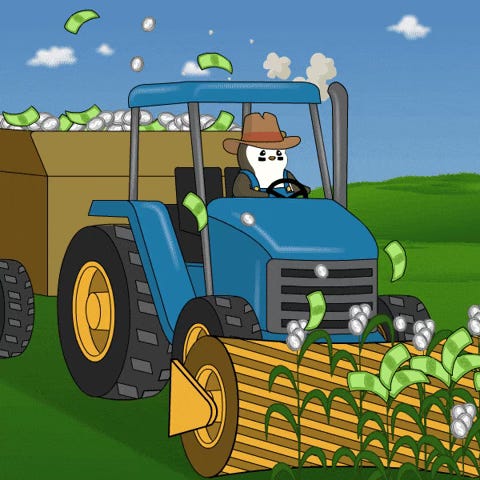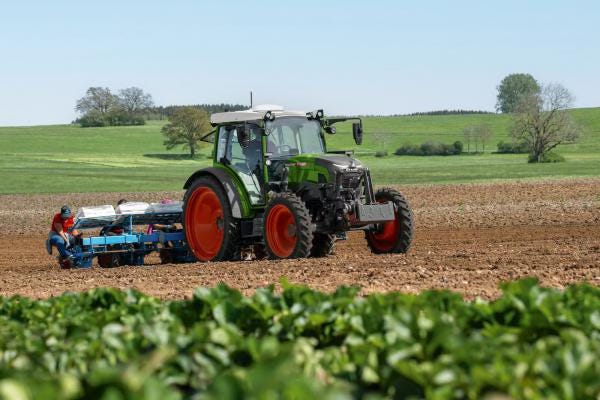From Iowa to India: Inside the Global Battle for Tractor Dominance
Electrification, smart farming, and emerging OEMs are reshaping a $50B+ global industry. Here's who’s winning, where—and what comes next.
🚜 Why the Global Tractor Market Is Ripe for Disruption
The global tractor industry is at an inflection point. Longtime leaders like John Deere and CNH are facing fierce competition from rising giants in India and China. Meanwhile, mega trends like electrification, autonomy, and smart farming are rewriting the rules of the game. With over 2 million farm tractors sold annually, this is no sleepy sector — it’s a global battleground shaping the future of agriculture, sustainability, and rural economies.
In this article, we unveil our 2025 Global Tractor Market Map — a region-by-region breakdown of leading OEMs — and explore the trends and strategies redefining the competitive landscape.
🌐 2025 Market Map: Who’s Who in Global Tractor OEMs
To understand this evolving industry, it’s essential to map which major tractor brands belong to which parent companies, their country of origin, and where they dominate. Here's the breakdown:
* TAFE produces Massey Ferguson tractors under license in India.
Key patterns: 🌎 North America and Europe are home to global brands, 🏭 Asia is the volume powerhouse, and 🧪 innovation is no longer exclusive to the West.
North America and Europe are home to multinational giants like John Deere, CNH, and AGCO, who market globally. Asia – especially India and China – hosts high-volume domestic players (e.g. Mahindra, TAFE, YTO) that increasingly expand beyond their home markets. Japan and South Korea contribute strong compact tractor specialists (Kubota, Yanmar, LS, TYM). In Latin America, global brands operate local manufacturing (and a few local makers persist). Next, we examine how these players are navigating key trends.
⚡ Electrification: The Race to Zero Emissions
As emissions standards tighten and sustainability becomes a business imperative, electrification has moved from prototype to priority. Tractor OEMs across the globe are racing to bring electric and hybrid models to market — not just for compliance, but for competitive edge. Here are some of the most notable efforts underway:
CNH Industrial launched the New Holland T4 Electric Power — the first all-electric utility tractor with autonomous features.
John Deere is developing electric-drive and hydrogen-fuel concepts.
AGCO unveiled the Fendt e100 Vario in Europe.
Escorts and Sonalika in India have released pilot EV models under 50 HP.
While battery limits (e.g. energy density, field runtime) remain, 🔋 the pace of innovation and regulatory pressure makes electrification a key battleground.
📶 Smart Farming & Connectivity: The Rise of the Connected Tractor
Modern tractors are evolving into mobile data platforms. Features like GPS-guidance, telematics, and remote diagnostics are now expected, not optional. As farms get smarter and more data-driven, tractors are becoming central nodes in precision agriculture systems. OEMs are embedding technology that enables better decision-making, automation, and performance optimization:
John Deere offers image sensors, GPS, and the Operations Center for farm data.
CNH tractors feature auto-steering and fleet monitoring tools via AFS Connect.
Mahindra equips top-tier Indian models with telematics via DiGiSENSE.
YTO (China) has launched autonomous-capable electric tractors.
Expect widespread adoption of OTA updates, real-time data services, and even AI-assisted implements. 🚜 + 📡 = 💪
🧾 Regulation: Emissions, Repairs & Localization
While technology and competition are driving innovation, regulation is the invisible hand shaping design, pricing, and market access. From emissions rules to farmer rights, governments are setting the boundaries within which OEMs must operate, such as:
🌱 Emission norms like EU Stage V force engine innovation and cleaner fuels.
🛠 Right-to-Repair laws in places like Colorado (U.S.) are pressuring OEMs to share diagnostic tools and repair manuals.
🏭 Local content rules in markets like India, Brazil, and China push manufacturers to build locally or partner with regional firms.
Compliance is no longer just about technology — it’s a customer trust issue and a strategic must.
🌎 Regional Dynamics: Market Share by Region
The competitive balance looks very different depending on where you are in the world. Let’s take a tour through the top tractor markets and see who’s leading the charge — and why.
🇺🇸 North America
High sales volume: ~360K tractors sold in U.S./Canada (2024)
Market leaders: John Deere (dominant), CNH (Case IH, New Holland), AGCO (MF, Challenger)
Mahindra is a top sub-100 HP seller
Trends: autonomy, financing (e.g. John Deere Finance), smart tech
🇪🇺 Europe
158K tractors registered (2022)
Fragmented market: Deere, CNH, Fendt, CLAAS, SDF lead
High-tech, medium-sized (50–100 HP) 2WD tractors favored
EU policies accelerate precision farming and digital tools
🇮🇳 India
🔥 World’s largest tractor market by retail units: 894K (2024)
Dominated by Indian OEMs: Mahindra (42%), ITL (13%), TAFE (11.5%)
Deere is top foreign player but <8% share
Trends: larger HP, exports (e.g., Sonalika to 130+ countries)
🇨🇳 China
Massive volume but fragmented
YTO (30%+) leads, followed by Lovol and Zoomlion
Foreign OEMs serve high-end segment
Big push on autonomy and digital features
🌎 Latin America
Brazil leads regional demand
Market share: AGCO (Massey, Valtra), John Deere, CNH dominate
Local players like Agrale exist but small
Growing presence of Mahindra, Solis, Chinese brands
🏁 Traditional vs. Emerging OEMs: The Competitive Landscape
The global tractor market is no longer dominated by a few legacy brands. A new wave of manufacturers — largely from India, China, and South Korea — is rising fast, reshaping global dynamics through cost innovation, agile manufacturing, and targeted expansion. But the incumbents aren’t standing still. What’s unfolding is a strategic arms race between century-old giants and ambitious newcomers. Here’s how they stack up across the key battlefronts:
💡 Innovation
Traditional OEMs (Deere, CNH, AGCO, Kubota): lead in R&D, autonomy, precision tech
Emerging OEMs (Mahindra, Sonalika, YTO): closing gap via partnerships & frugal innovation
→ Example: Mahindra + Mitsubishi, Sonalika + Yanmar
🌐 Global Reach
Traditional: global manufacturing & dealer networks
Emerging: expanding rapidly (e.g., Mahindra top 5 in U.S. compact tractor sales)
💼 Business Models
Traditional: premium, full-line, service-focused
Emerging: value-focused, localized, agile
→ But lines are blurring — Deere makes economy tractors in India; Mahindra adds premium models in U.S.
🧭 Strategy Recommendations for OEMs
In a market defined by disruption, standing still is not an option. Whether you're a traditional OEM defending market share or an emerging player looking to scale globally, success in 2025 and beyond will depend on your ability to innovate, localize, and adapt. Based on the trends and competitive shifts explored above, here are five strategic priorities every tractor manufacturer should be considering:
⚡ Accelerate Electrification & Alt-Fuels: Pilot electric offerings and explore hydrogen, biogas.
📡 Embed Smart Tech: Offer GPS, OTA, and autonomy features as default.
🌍 Localize Products & Production: Set up local assembly and tailor models to region-specific needs.
🔧 Expand After-Sales & Financing: Boost parts/service support and offer flexible payment models.
📜 Stay Ahead of Regulations: Be proactive on emissions, Right-to-Repair, and data access.
🧠 Final Take
The global tractor industry is more dynamic than ever. Western incumbents bring deep tech and legacy strength. Asian challengers bring speed, scale, and cost-efficiency. What unites them all? The race to deliver smarter, cleaner, and more accessible machines for the future of farming.
Farmers worldwide are poised to benefit from this innovation surge — whether it’s an autonomous tractor in Iowa or a rugged 40 HP machine in rural India. 🌾🚀
Thanks for reading this week’s deep dive. Your thoughts? Let us know at editor@sdvinsider.com—we'd love to hear from you!
Until next time,
- SDV Insider Staff
Today’s Article is Brought to you by Sibros
Sibros delivers a complete connected vehicle platform purpose-built for software-defined on and off-road vehicles. From real time data logging and over-the-air software updates to remote commands and diagnostics, Sibros helps OEMs unlock new value at every stage of the vehicle lifecycle. Get in touch with Sibros to learn more.







